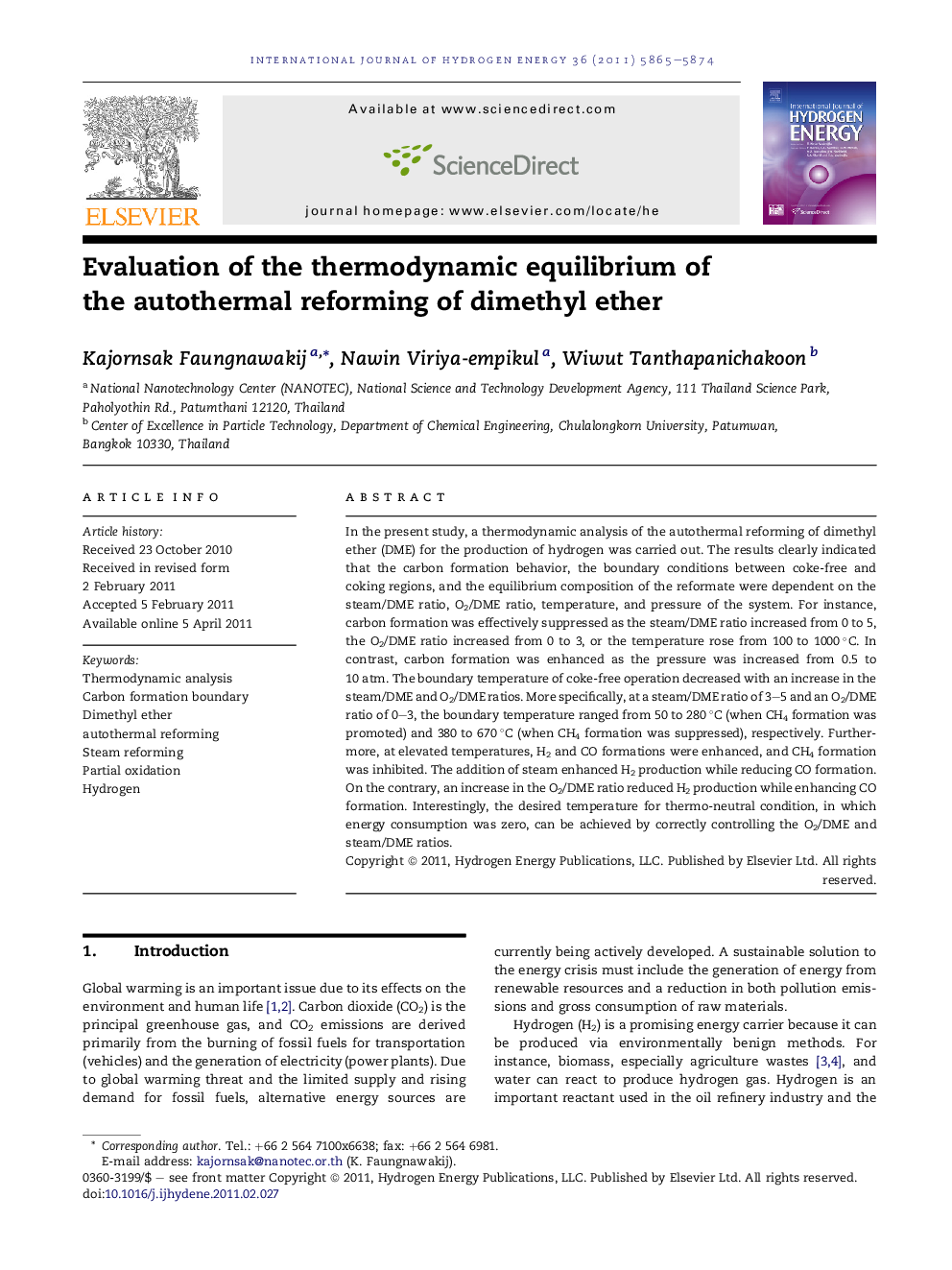| Article ID | Journal | Published Year | Pages | File Type |
|---|---|---|---|---|
| 1279516 | International Journal of Hydrogen Energy | 2011 | 10 Pages |
In the present study, a thermodynamic analysis of the autothermal reforming of dimethyl ether (DME) for the production of hydrogen was carried out. The results clearly indicated that the carbon formation behavior, the boundary conditions between coke-free and coking regions, and the equilibrium composition of the reformate were dependent on the steam/DME ratio, O2/DME ratio, temperature, and pressure of the system. For instance, carbon formation was effectively suppressed as the steam/DME ratio increased from 0 to 5, the O2/DME ratio increased from 0 to 3, or the temperature rose from 100 to 1000 °C. In contrast, carbon formation was enhanced as the pressure was increased from 0.5 to 10 atm. The boundary temperature of coke-free operation decreased with an increase in the steam/DME and O2/DME ratios. More specifically, at a steam/DME ratio of 3–5 and an O2/DME ratio of 0–3, the boundary temperature ranged from 50 to 280 °C (when CH4 formation was promoted) and 380 to 670 °C (when CH4 formation was suppressed), respectively. Furthermore, at elevated temperatures, H2 and CO formations were enhanced, and CH4 formation was inhibited. The addition of steam enhanced H2 production while reducing CO formation. On the contrary, an increase in the O2/DME ratio reduced H2 production while enhancing CO formation. Interestingly, the desired temperature for thermo-neutral condition, in which energy consumption was zero, can be achieved by correctly controlling the O2/DME and steam/DME ratios.
► The temperature of coke-free operation decreased with an increase in the steam/DME and O2/DME ratio. Namely, at a steam/DME ratio of 3–5 and an O2/DME ratio of 0–3, the temperature ranged from 50 to 280 °C (favoring CH4 formation) and 380 to 470 °C (unfavorable for CH4formation), respectively. ► The elevated temperatures and steam/DME ratios, but O2/DME ratios increased H2 formation. The thermo-neutral conditions can be achieved at appropriate steam/DME and O2/DME ratios.
